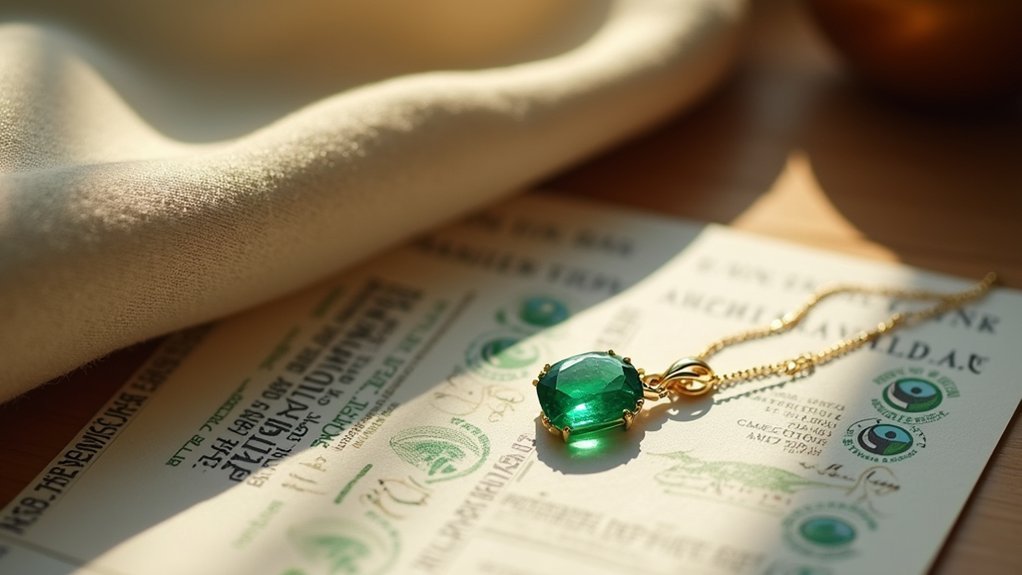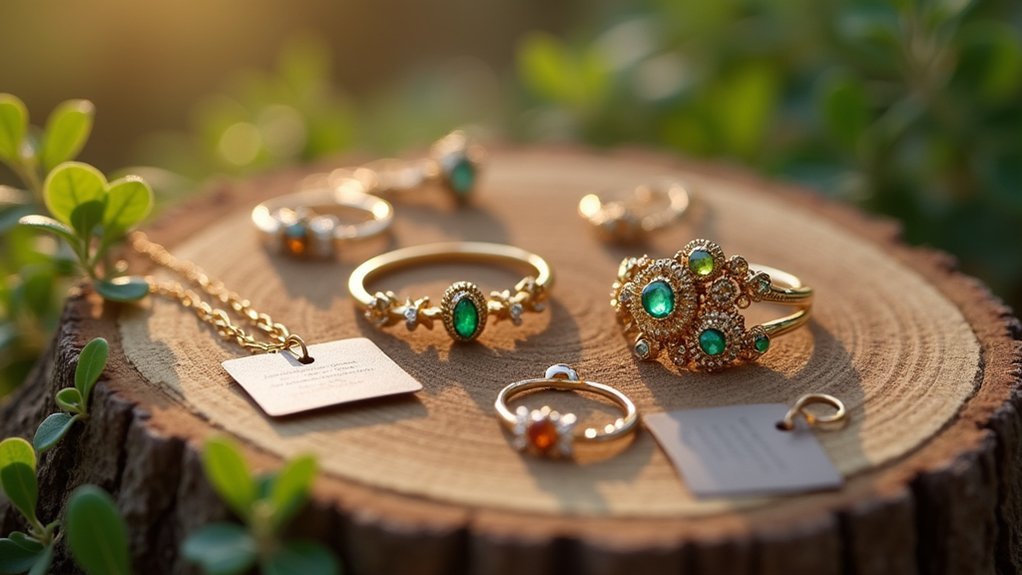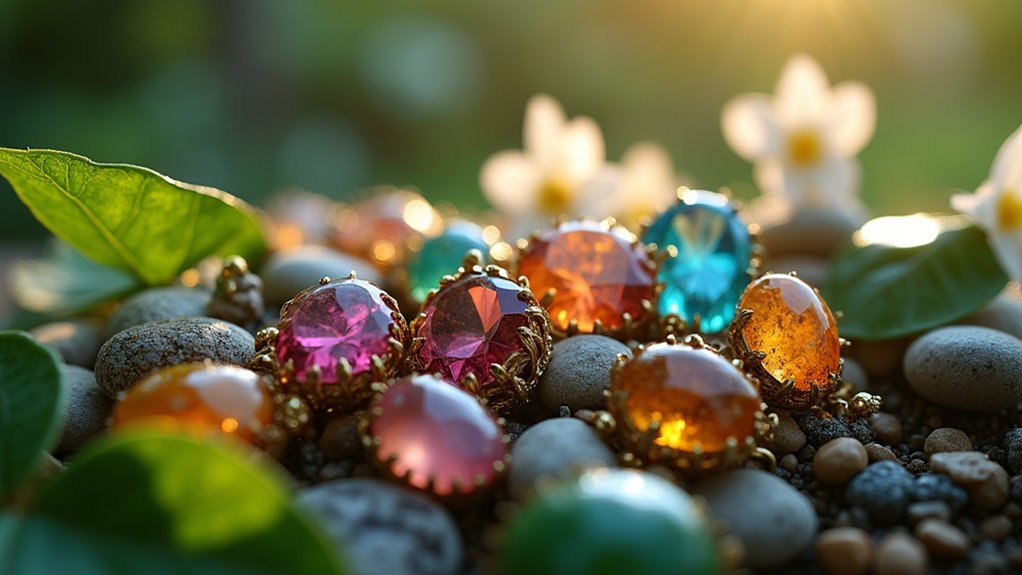You can guarantee ethical jewelry purchases by following three key strategies. First, verify supplier certifications from organizations like Fairtrade, Fairmined, or the Responsible Jewelry Council, which guarantee fair labor practices and no child labor. Second, choose recycled metals and lab-grown gemstones that reduce environmental impact by up to 90% while avoiding mining-related ethical concerns. Third, research brand transparency by examining their supply chain documentation and published audits. These practices will guide you toward discovering additional ethical sourcing methods.
Verify Supplier Certifications and Fair Trade Standards

When sourcing ethical jewelry, you’ll want to prioritize suppliers who hold certifications from recognized organizations like Fairtrade, Fairmined, or the Responsible Jewelry Council.
These certifications verify adherence to fair trade standards and fair labor practices while ensuring no child labor occurs during production.
Ethical jewelry certifications guarantee fair labor practices and confirm that no child labor is used in production processes.
You should verify supplier certifications by requesting documentation that proves their commitment to sustainable practices.
Look for transparency in supply chains through clear material origin records. Reputable brands often publish detailed sustainability reports outlining their sourcing practices and ethical sourcing policies.
Don’t hesitate to engage directly with suppliers about their labor standards.
Ask specifically about conflict-free gemstones and their measures to prevent exploitation. This direct approach reveals their true commitment to eliminating child labor from their operations.
Choose Recycled Metals and Lab-Grown Gemstones
Beyond verifying supplier credentials, you can make an immediate impact by selecting jewelry crafted from recycled metals and lab-grown gemstones.
These sustainable sourcing choices eliminate child labor concerns while dramatically reducing environmental impact. Recycled metals from post-consumer products cut jewelry production’s carbon footprint by up to 90% compared to newly mined materials, supporting responsible sourcing within a circular economy.
Lab-grown gemstones, including diamonds and sapphires, replicate natural processes through advanced technology without ethical concerns tied to conflict mining or exploitation.
They’re chemically identical to natural stones but free from social issues plaguing traditional mining. When you choose ethical jewelry featuring these materials, you’re encouraging the industry to adopt more sustainable practices while ensuring your purchase supports ethical practices rather than harmful mining operations.
Research Brand Transparency and Supply Chain Practices

How can you determine if a jewelry brand truly operates ethically? Start by examining brand transparency regarding material origins. Companies practicing ethical sourcing openly share detailed supply chain information.
Look for certifications from organizations like the Responsible Jewelry Council, which verify adherence to strict labor practices standards that prohibit child labor.
Review published audits and compliance reports that reputable brands regularly release. These documents demonstrate their commitment to preventing exploitation throughout their operations.
Pay attention to how companies communicate about their workforce conditions and sourcing methods.
Don’t forget to check independent assessments and customer reviews. Watchdog organizations and consumer feedback often reveal important insights about a brand’s ethical practices, helping you identify any reported issues with child labor or other concerning practices.
Frequently Asked Questions
What Is the Most Ethical Material for Jewelry?
You’ll find recycled metals are the most ethical jewelry material since they eliminate mining’s environmental damage and labor concerns entirely. They’re readily available, cost-effective, and don’t compromise on quality or beauty.
How to Ethically Buy Jewelry?
Research brands with verified ethical sourcing and certifications like Fair Trade. Choose recycled metals and lab-grown gems. Buy vintage pieces when possible. Ask brands directly about their labor practices and supply chain transparency.
How to Make Environmentally Friendly Jewelry?
You’ll make environmentally friendly jewelry by using recycled metals like gold and silver, choosing lab-grown diamonds, selecting sustainably sourced gemstones, implementing eco-friendly production methods, and minimizing waste throughout your creation process.
Can Jewelry Be Eco-Friendly?
Yes, you can choose eco-friendly jewelry made from recycled metals, lab-grown diamonds, and ethically sourced gemstones. You’ll support sustainable production methods while avoiding materials linked to environmental damage and exploitation.
In Summary
You’ve got the power to make ethical jewelry choices that don’t exploit children. By verifying certifications, choosing recycled materials and lab-grown stones, and researching brand transparency, you’re supporting responsible practices. Don’t compromise your values for sparkle—there’s plenty of beautiful jewelry made without harm. Your purchasing decisions send a clear message that child labor won’t be tolerated in your jewelry box.





Leave a Reply